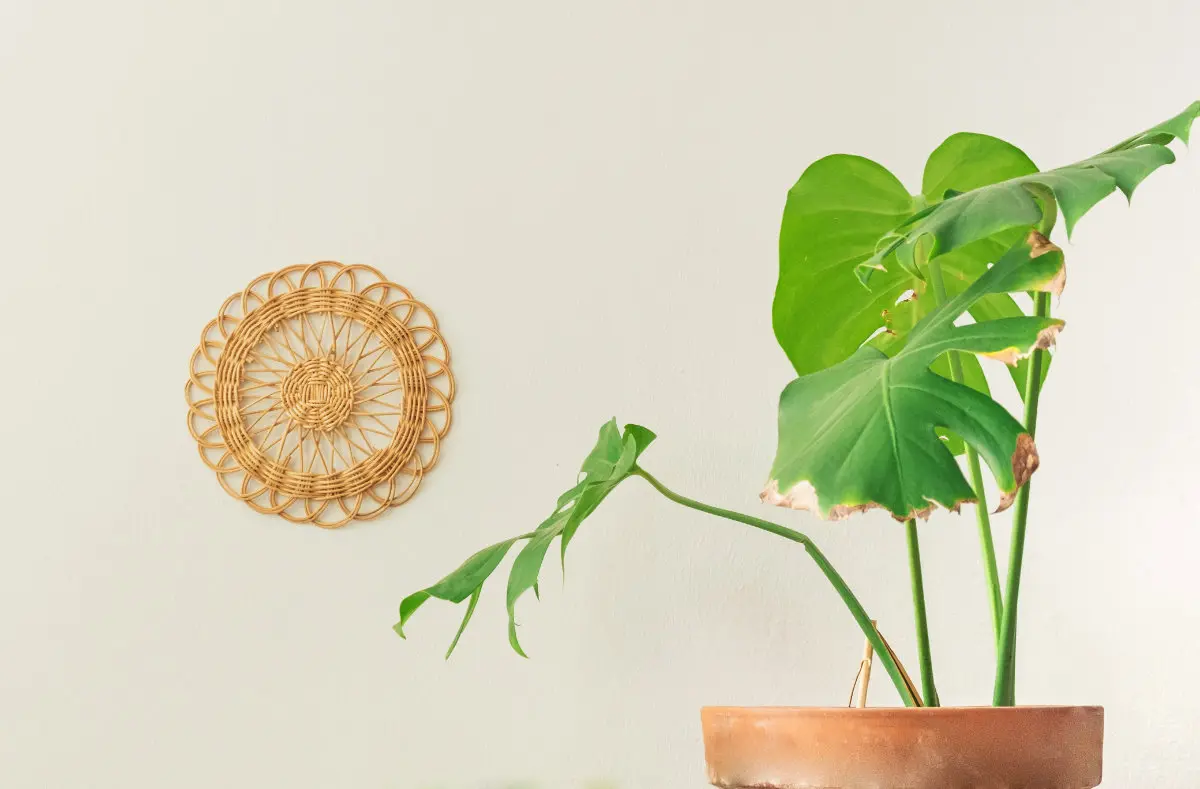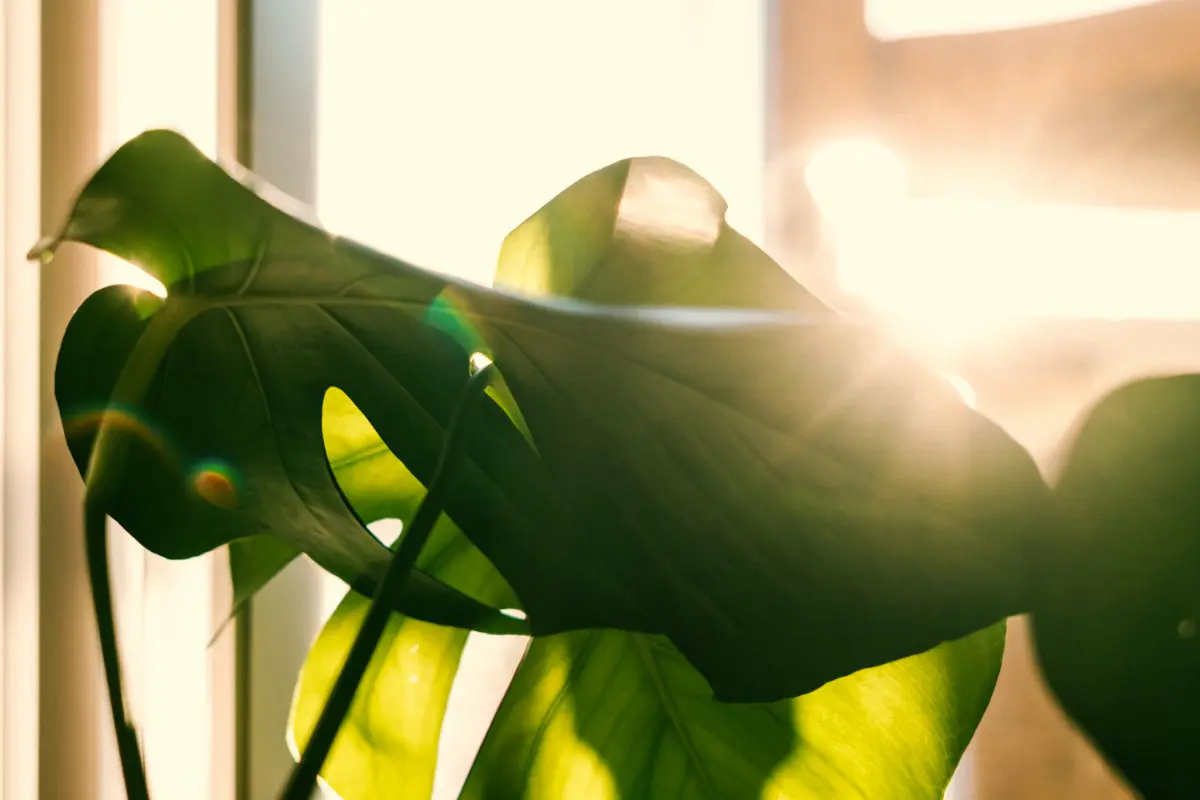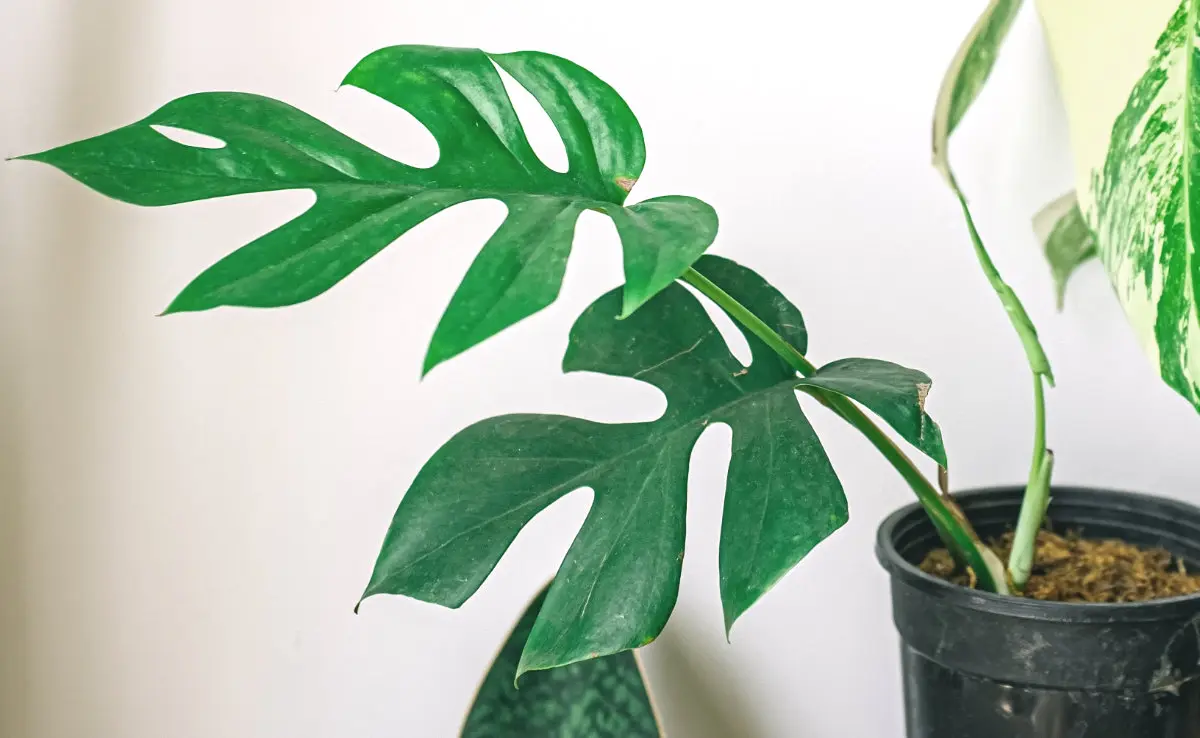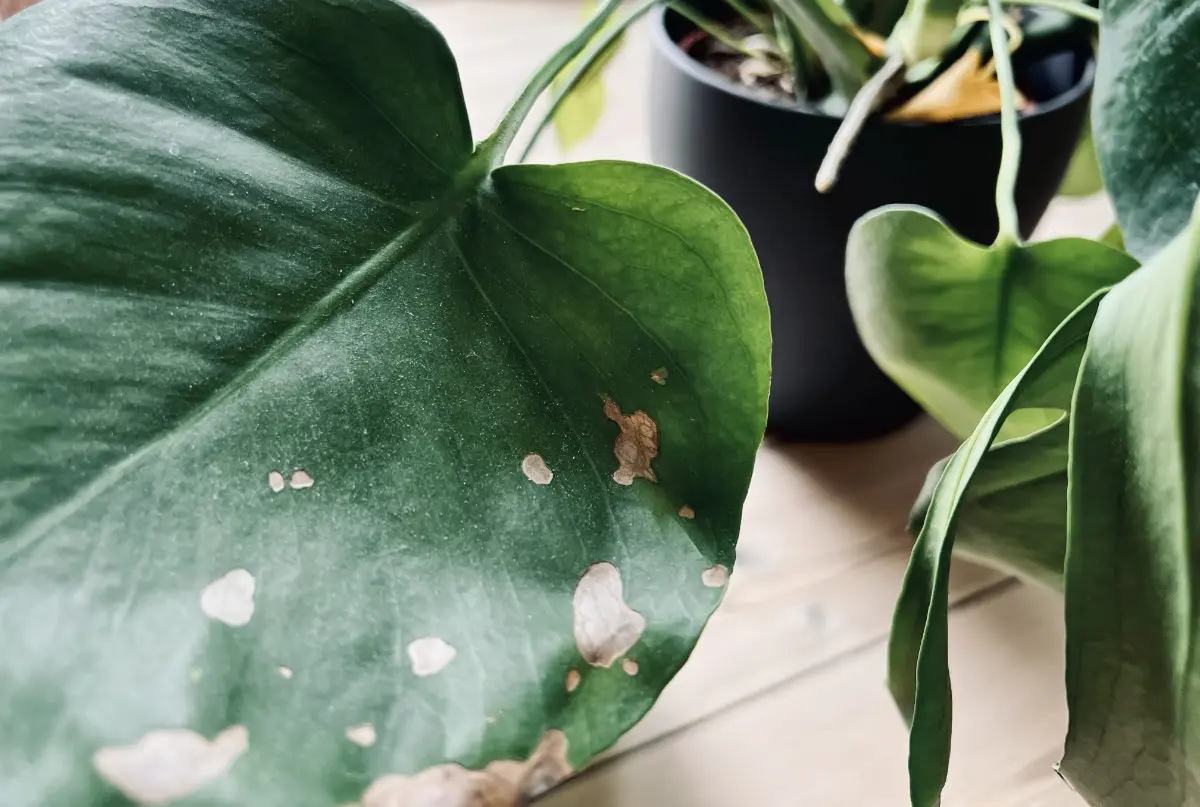How to Detect and Combat Monstera Root Rot
Monstera root rot is a common issue that can affect your beloved Monstera plant. Learn how to identify, prevent, and treat root rot to keep your Monstera healthy and thriving.
By Tobias Holm
Even the most experienced plant enthusiasts can face a common enemy: Monstera root rot. This silent killer can wreak havoc on your beloved plant, causing it to wither and die. But fear not.
In this article, we will explore the signs and symptoms of Monstera root rot, as well as provide you with actionable tips on how to detect and combat this plant disease. From understanding proper watering techniques to implementing effective drainage solutions, we will equip you with the knowledge and tools you need to save your Monstera from the grips of root rot.
So, read on and discover how to keep your Monstera thriving and healthy for years to come.
Understanding the causes of Monstera root rot
Monstera root rot is a fungal disease that can be caused by several factors.
One of the most common causes is overwatering. When the roots of the Monstera plant are constantly saturated, it creates the perfect environment for the growth of fungi that attack the roots.
Poor drainage is another culprit. If the plant sits in waterlogged soil, it can suffocate the roots and lead to rot. Additionally, using contaminated soil or pots can introduce harmful pathogens to the plant, making it more susceptible to root rot.
To prevent Monstera root rot, it is crucial to understand these causes and take proactive measures. First and foremost, ensure that your Monstera is potted in well-draining soil. This will allow excess water to escape and prevent waterlogged conditions.
Avoid using garden soil, as it tends to retain too much moisture. Instead, opt for a well-balanced potting mix specifically formulated for indoor plants.
Additionally, ensure your pots have drainage holes to allow water to flow freely. Lastly, be mindful of the watering schedule. Monstera plants prefer slightly moist soil, but it's important not to overwater. Allow the top inch of soil to dry out before watering again.
Signs and symptoms of Monstera root rot
Detecting Monstera root rot early is vital to saving your plant. You can take prompt action to combat the disease by being aware of the signs and symptoms. One of the first indicators of root rot is yellowing leaves. As the roots become damaged and unable to absorb water and nutrients, the leaves will start to turn yellow, indicating the plant's struggle to survive. In severe cases, the leaves may even develop brown spots or become mushy to the touch.
Another telltale sign of root rot is a foul odor. As the roots decay, they release an unpleasant smell that is hard to miss. If you notice a musty or rotten smell emanating from your Monstera plant, it's likely that root rot is present.
You can also inspect the roots to see if something is wrong. Gently remove the plant from its pot and examine the roots. Healthy roots should be firm and white, while rotted roots will appear brown and mushy.
Additionally, if you gently tug on the plant and it comes out easily from the pot, it indicates that the roots have rotted away and the plant is no longer anchored properly.
Preventing Monstera root rot
Prevention is always better than cure when it comes to plant diseases, and Monstera root rot is no exception. By implementing a few simple practices, you can significantly reduce the risk of your Monstera falling victim to this silent killer.
First and foremost, ensure that you are using the right potting mix. As mentioned earlier, a well-draining mix specifically formulated for indoor plants is ideal. This will allow excess water to escape and prevent waterlogged conditions that can lead to root rot.
Another important preventive measure is to choose the right pot size. It may be tempting to pot your Monstera in a larger pot to allow for growth, but this can actually increase the risk of root rot. When a plant is placed in a pot that is too big, it takes longer for the soil to dry out, leading to prolonged moisture that can promote fungal growth. Instead, choose a pot that is just slightly larger than the current root system of your Monstera.
In addition to potting practices, proper watering is crucial in preventing root rot. Avoid overwatering by allowing the top inch of soil to dry out before watering again. Use your finger to test the moisture level of the soil, and only water when it feels slightly dry. It's also a good idea to water your Monstera from the bottom rather than from the top. This allows the roots to absorb water as needed without saturating the soil excessively.
Treating Monstera root rot
If your Monstera has fallen victim to root rot, there are steps you can take to try and save it.
First, carefully remove the plant from its pot and gently wash away the soil from the roots. Trim away any mushy or rotten roots using clean, sterilized scissors or pruning shears. Be sure to disinfect the tools between each cut to prevent the spread of pathogens. After removing the affected roots, allow the plant to dry out for a day or two to promote healing.
Once the plant has dried out, repot it in fresh, well-draining soil. Make sure to choose a pot that allows for proper drainage and is just slightly larger than the root system. Place the plant in a location with bright, indirect light and avoid overwatering. Monitor the plant closely for any signs of improvement or further deterioration. With proper care and patience, your Monstera has a chance of recovering from root rot.
Tips for maintaining healthy Monstera plants
To keep your Monstera thriving and prevent root rot, there are a few additional tips to keep in mind.
First, ensure that your plant is receiving the right amount of light. Monstera plants prefer bright, indirect light, so place them near a window with filtered sunlight. Avoid exposing your Monstera to direct sunlight, as it can scorch the leaves.
In addition to light, proper humidity levels are important for Monstera plants. They thrive in high-humidity environments, so consider using a humidifier or placing a tray of water near the plant to increase moisture in the air. Misting the leaves occasionally can also help maintain adequate humidity.
Lastly, fertilize your Monstera regularly to provide it with the necessary nutrients. Choose a balanced, water-soluble fertilizer and follow the instructions on the packaging. Overfertilizing can lead to salt buildup in the soil, which can harm the roots. Therefore, it's important to follow the recommended dosage and frequency.
Common mistakes to avoid when dealing with Monstera root rot
While it's important to know the right practices for combatting Monstera root rot, it's equally important to avoid common mistakes that can worsen the situation.
One common mistake is overwatering. As mentioned earlier, Monstera plants prefer slightly moist soil, but overwatering can lead to root rot. Be mindful of your watering schedule and allow the top inch of soil to dry out before watering again.
Another mistake to avoid is using contaminated soil or pots. Always use fresh, sterile potting mix when repotting your Monstera, and make sure your pots are clean and free from any harmful pathogens. Using contaminated soil or pots can introduce fungal spores to the plant, increasing the risk of root rot.
Lastly, be cautious of overfertilizing your Monstera. While fertilization is important for providing nutrients, excessive fertilization can lead to salt buildup in the soil, which can harm the roots. Follow the recommended dosage and frequency provided by the fertilizer manufacturer to ensure your Monstera receives the right amount of nutrients without causing harm.
The importance of proper watering and drainage
Proper watering and drainage are crucial factors in preventing and combating Monstera root rot. As mentioned earlier, overwatering is one of the main causes of root rot.
To avoid this, it's important to understand the watering needs of your Monstera and provide it with the right amount of water. Allow the top inch of soil to dry out before watering again, and ensure that excess water can escape through drainage holes in the pot.
In addition to proper watering, effective drainage is equally important. If your Monstera is sitting in waterlogged soil, it can suffocate the roots and lead to rot. To improve drainage, choose pots with drainage holes and use a well-draining potting mix. This will allow water to flow freely through the soil, preventing waterlogged conditions that can promote fungal growth.
Conclusion
Monstera root rot may be a silent killer, but armed with the knowledge and tips provided in this article, you can detect and combat this plant disease effectively. By understanding the causes and signs of root rot, you can take proactive measures to prevent it from occurring in the first place.
If your Monstera does fall victim to root rot, early detection, and proper treatment can give your plant a chance to recover. Remember to maintain proper watering and drainage practices, as these are key factors in keeping your Monstera thriving and healthy.
Remember, prevention is always better than cure when it comes to plant diseases, so take the necessary steps to avoid root rot. With proper care, your Monstera will thrive and continue to bring joy and beauty to your indoor garden.
So, go ahead and put these tips into action and watch your Monstera flourish.



